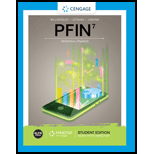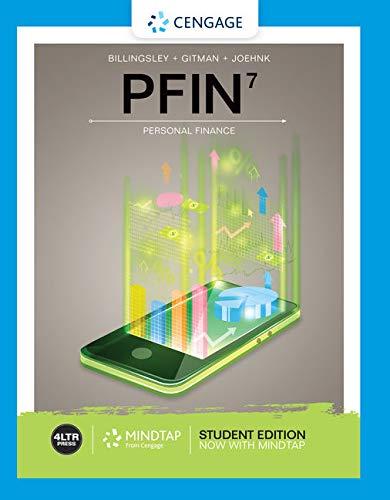
To discuss: The concept of risk and basics of insurance underwriting
Explanation of Solution
Risk:
Risk refers to the chances of incurring economic losses. The financial risk is associated with those things in which the individual have financial interest such as life of an individual, home, car, health and business. In order to mitigate these financial losses various strategies are used by the individuals which are as follows:
- Risk avoidance: The individuals try to avoid those activities and actions that involve the risk of loss. It is adopted whenever the cost of avoiding the risk is less than the cost of handling that risk in some other way.
- Loss prevention and loss control: Loss prevention includes those activities that reduce the chances of occurrence of a risk and loss control refers to those activities that reduce the severity of loss in case it occurs.
- Risk assumption: The technique used to bear the risk of loss. It is suitable the risk involved is of smaller amount and insurance proves to be an expensive choice.
- Insurance: A contract undertaken to mitigate the loss in case of its occurrence in exchange of the smaller amounts in the form of insurance premium is known as the insurance.
Underwriting refers to the process of deciding to whom the insurance coverage is to be provided and the amount of premium to be charged so that it represent the fair charges for covering the chances of loss. Underwriting helps the insurance companies to save themselves from the adverse selection, where the clients having higher risk apply for the insurance and gets the coverage. The underwriting process tries to improve always by the insurer so as to provide the exact cover to policyholders and be it attractive and competitive.
Want to see more full solutions like this?
- No chatgptPlease don't answer i will give unhelpful all expert giving wrong answer he is giving answer with using incorrect values.arrow_forwardPlease don't answer i will give unhelpful all expert giving wrong answer he is giving answer with incorrect data.arrow_forward4. On August 20, Mr. and Mrs. Cleaver decided to buy a property from Mr. and Mrs. Ward for $105,000. On August 30, Mr. and Mrs. Cleaver obtained a loan commitment from OKAY National Bank for an $84,000 conventional loan at 5 percent for 30 years. The lender informs Mr. and Mrs. Cleaver that a $2,100 loan origination fee will be required to obtain the loan. The loan closing is to take place September 22. In addition, escrow accounts will be required for all prorated property taxes and hazard insurance; however, no mortgage insurance is necessary. The buyer will also pay a full year's premium for hazard insurance to Rock of Gibraltar Insurance Company. A breakdown of expected settlement costs, provided by OKAY National Bank when Mr. and Mrs. Cleaver inspect the uniform settlement statement as required under RESPA on September 21, is as follows: I. Transactions between buyer-borrower and third parties: a. Recording fees--mortgage b. Real estate transfer tax c. Recording fees/document…arrow_forward
- finance subjectarrow_forwardCould you help explain, what is the complete salary survey analysis, and ensuring the data is relevant and up-to-date? What is the job evaluation and compensation plan? How to ensure the final report is comprehensive, clearly structured, and aligned with the company vision?arrow_forwardThe maturity value of an $35,000 non-interest-bearing, simple discount 4%, 120-day note is:arrow_forward
- Carl Sonntag wanted to compare what proceeds he would receive with a simple interest note versus a simple discount note. Both had the same terms: $18,905 at 10% for 4 years. Use ordinary interest as needed. Calculate the simple interest note proceeds. Calculate the simple discount note proceeds.arrow_forwardWhat you're solving for Solving for maturity value, discount period, bank discount, and proceeds of a note. What's given in the problem Face value: $55300 Rate of interest: 10% Length of note: 95 days Date of note: August 23rd Date note discounted: September 18th Bank discount rate:9 percentarrow_forwardAll tutor giving incorrect solnarrow_forward
 Pfin (with Mindtap, 1 Term Printed Access Card) (...FinanceISBN:9780357033609Author:Randall Billingsley, Lawrence J. Gitman, Michael D. JoehnkPublisher:Cengage Learning
Pfin (with Mindtap, 1 Term Printed Access Card) (...FinanceISBN:9780357033609Author:Randall Billingsley, Lawrence J. Gitman, Michael D. JoehnkPublisher:Cengage Learning

